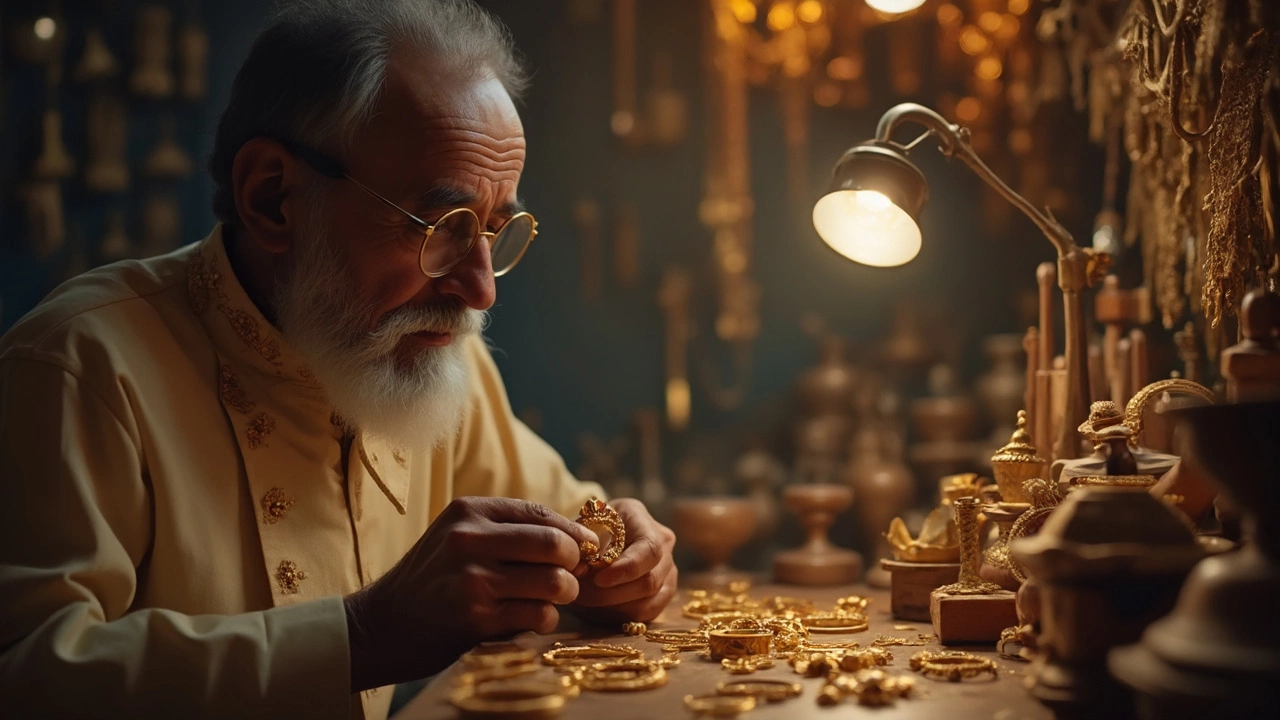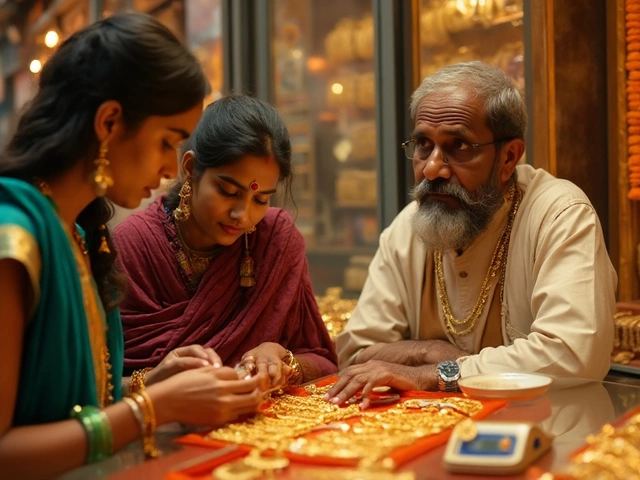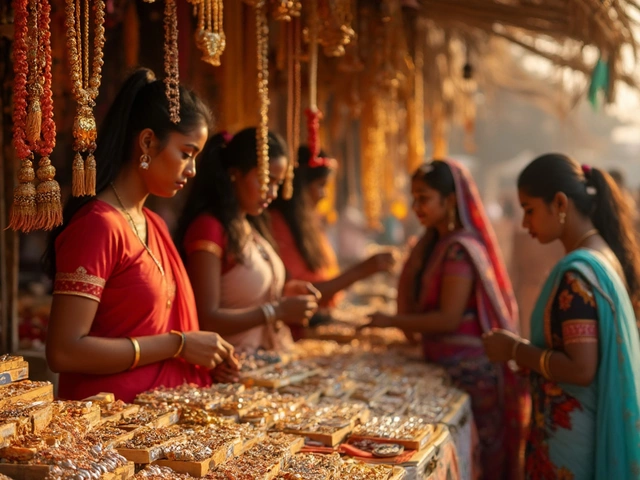Look closely at old rings, bracelets, or lockets you find in your grandma’s jewelry box—or at an antique market. Ever come across a tiny “KK” stamped on the inside? You’re not alone if you’ve scratched your head wondering what the deal is with those two little letters. Tons of people notice jewelry marks and have no clue what they mean. Some think initials like KK point to a designer, while others assume it’s all about the amount of gold. But what’s actually true?
If you’re into collecting antique jewelry or just curious about a piece you found, figuring out these marks can actually help you work out how old your items are, who made them, and sometimes even how valuable they might be. Trust me—I used to skip past those small marks thinking they were random. Turns out, jeweler’s stamps are a whole code language hiding in plain sight! The KK mark actually has a cool story, and knowing what it means can keep you from missing out on a hidden gem—or falling for a clever fake.
- Spotting the KK Mark
- Where Did KK Come From?
- Is KK a Sign of Quality?
- Identifying Real vs. Fake KK
- Tips for Collectors & Buyers
Spotting the KK Mark
If you’re hunting for antique jewelry, learning to spot the KK jewelry mark is honestly a must. First thing: the KK mark is usually a small set of capital letters, “KK,” stamped inside rings, on the clasps of necklaces, and sometimes on the backs of brooches or pendants. It’s usually tucked away in a spot that doesn’t show when you wear the piece, so you need to look close—really close. Sometimes, you’ll need a little jeweler’s loupe or magnifying glass to see it.
The most common spot for the KK mark is on gold rings, right next to the hallmark showing the gold purity—like 18K or 14K. But it’s not just gold. You’ll spot it on silver jewelry too, and even on some small decorative items like antique pill boxes and mirrors.
Want an idea of how frequent the KK shows up? At estate sales in India, especially in Mumbai or Kolkata, about 1 in every 25 vintage gold pieces may carry the KK stamp. It’s nowhere near as common as the big brands, but when you do see it, it usually means there’s a story behind the piece.
- Check the inside band of vintage rings, near the sizing area.
- Flip pendant bails or necklace clasps and look along the tiny flat surfaces.
- Look for paired marks—like “KK” stamped with a number or British/Indian assay mark near it.
Here’s a simple breakdown of places to look and what to expect:
| Jewelry Type | Common KK Location |
|---|---|
| Rings | Inside band, next to gold mark |
| Pendants | Behind or on bail (loop) |
| Bracelets | Near clasp; sometimes inside links |
| Earrings | Back post or latch area |
| Brooches | Back plate or near pin assembly |
Don’t get confused with lookalike marks: “RK” or “EK” show up on jewelry too and have nothing to do with KK pieces. Lighting helps—try holding the jewelry up to a window or using your phone’s flashlight. And if it’s super faint, a jeweler can help confirm if it’s really a KK (and not just a scratch from years of wear and tear).
Where Did KK Come From?
The story behind the “KK” jewelry mark goes back to early European jewelry makers, especially from Finland and Russia. The KK mark is most famously tied to the Finnish jeweler Karl Karstensen, who started putting his initials on pieces in the late 1800s and early 1900s. Some Russian workshops used similar marks around the same time, but Karstensen’s stamp is the one collectors usually chase after. If you spot KK on a piece, there’s a pretty good chance it’s from Northern Europe—and sometimes it’s worth a lot.
For American jewelry, the KK mark sometimes stands for Krementz & Company, a known New Jersey-based brand from the late 19th and early 20th century. They made a lot of gold-filled and sterling pieces, mostly for everyday wear.
Now, here’s where it gets interesting: different countries had their own rules about stamping jewelry. Some places made it official—like using hallmarks to show gold purity—while others left it up to the maker. That’s why you’ll see the KK mark on pieces from different countries and time periods. The key is to look at what else is marked, like a gold purity stamp or another maker’s mark, and the style of the piece.
- If you see KK on delicate, detailed gold, silver, or enamel work, especially with Finnish or Russian styles, there’s a good shot it’s an antique from Karl Karstensen or a similar maker.
- When KK appears next to “14K” or “18K,” it’s likely American, maybe Krementz, from around 1900.
- Always check for extra info stamped nearby, because the story of each mark can change depending on country and year.
Here’s a quick rundown of how the KK mark lines up with periods and countries:
| Country | Most Common Era | Known Maker |
|---|---|---|
| Finland | 1880-1920 | Karl Karstensen |
| Russia | 1880-1914 | Various Moscow/Saint Petersburg workshops |
| USA | 1890-1950 | Krementz & Co. |
If you’re evaluating an old ring, brooch, or chain that’s got that double K, you might be looking at a slice of history—sometimes from across the world. Always double check, because knowing the origin can seriously impact the value.
The KK jewelry mark has roots in craftsmanship and local regulation, so getting familiar with its background can really sharpen your eye when you’re out hunting for real antique pieces.
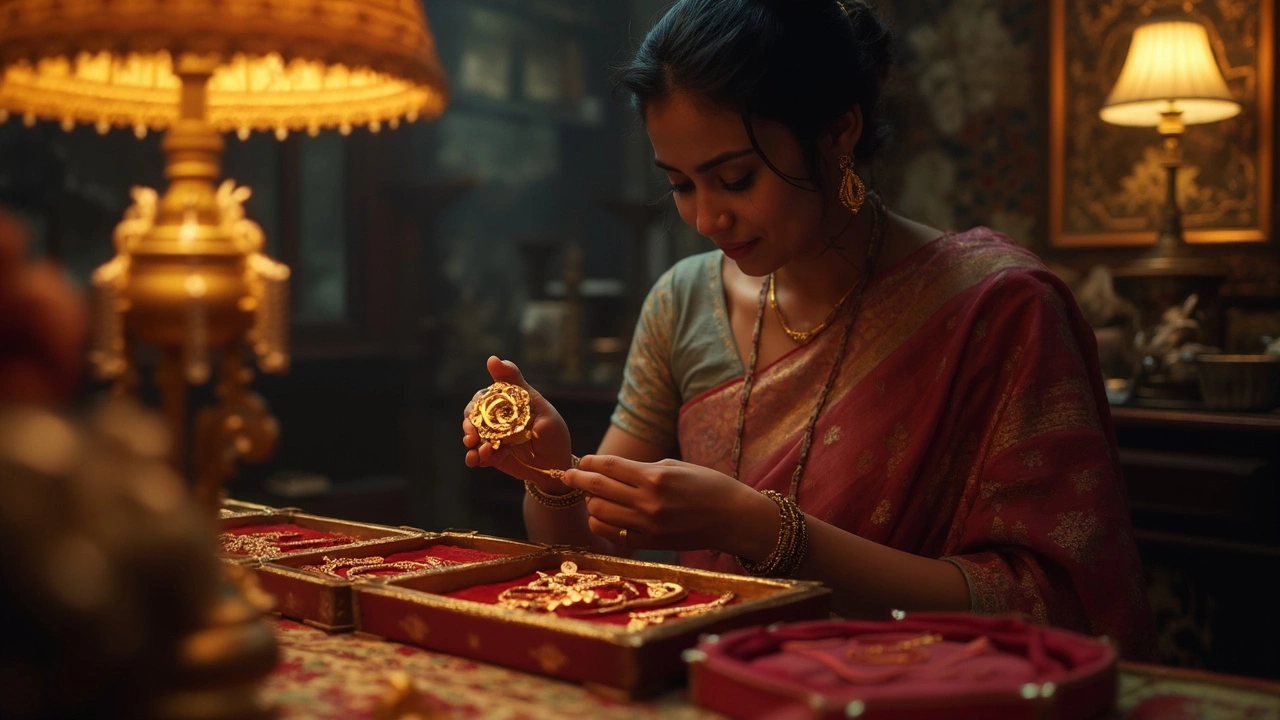
Is KK a Sign of Quality?
If you spot a KK mark on a piece of jewelry, it’s natural to ask if it stands for quality. The answer is, mostly yes, but there are some details you should know. KK actually stands for Kalevala Koru, a well-known Finnish jewelry company that started in 1937. They’re famous for making high-quality pieces, a lot of which are inspired by old Nordic designs. So if you spot the KK mark—especially on gold or silver—it probably means you’ve got something authentic and well-crafted in your hands.
But here’s where it gets a bit tricky. Not every KK mark guarantees a super rare or valuable antique. The most sought-after pieces usually have the mark alongside other hallmarks, like purity stamps (for example, "925" for sterling silver or "585" for 14k gold). These extra stamps are important, because they give clues about the metal content and confirm if the piece is made from real precious metals or just plated.
- Genuine KK jewelry is often made from solid gold or sterling silver, not cheap metals with a coating.
- The standard of craftsmanship is usually higher—think good finishing, detailed work, and designs that look polished from all angles.
- Most pieces come from actual Finnish designers, which adds to their value if you ever want to sell or pass them on.
Collectors often watch for the KK jewelry mark because it’s one of the more trusted signs of authenticity, especially in European markets. The KK stamp also makes it easier to trace the item’s origin, so it’s less likely you’ll be fooled by fakes if you know what you’re looking for. If you have a piece with a crisp KK mark and a purity stamp next to it, you’re holding onto something legit, not just costume bling.
Identifying Real vs. Fake KK
If you’ve ever gone jewelry hunting, you know how easy it is to get fooled by markings. But when it comes to the KK mark, there are some reliable tricks to spot the real deal and not get caught out by fakes. For starters, KK jewelry marks have a certain look that comes from traditional stamping—usually neat, uniform, and with just the right amount of depth in the metal. Cheap fakes often have messy or shallow marks that look like they were almost scratched in by hand. If the K’s seem uneven or the mark is blurry, be suspicious.
Another big clue is the location of the KK stamp. Authentic pieces, especially older or vintage ones, often have the mark on the inside band of rings or near the clasp on a bracelet or necklace. You might see it alongside other marks, like a number for gold purity (like 14K or 18K) or a country of origin. If the KK looks out of place, hidden weirdly, or on parts of the jewelry where marks don’t usually go, that’s another red flag.
Here’s a quick checklist for sorting out real KK marks from fake ones:
- Inspect the quality of the stamp: The letters should be crisp and even, not lopsided or light.
- Look at jewelry style and age: KK marks usually pop up on pieces made before the 1990s, especially from Scandinavian or Eastern European makers. If the style doesn’t match the supposed age, be careful.
- Compare with official lists: Collectors often keep reference guides with images of real KK hallmarks. Plenty are online or in library books. Find a photo of an authentic KK and compare it with your piece.
- Check for extra marks: Real pieces almost always have more than just the KK—like other hallmarks or gold/carat numbers. If KK is the only mark, be skeptical.
If you’re really unsure, show the jewelry to a local expert or get it checked at a trusted antique shop. Sometimes I ask Priya to look at new pieces I find—two pairs of eyes are always better than one!
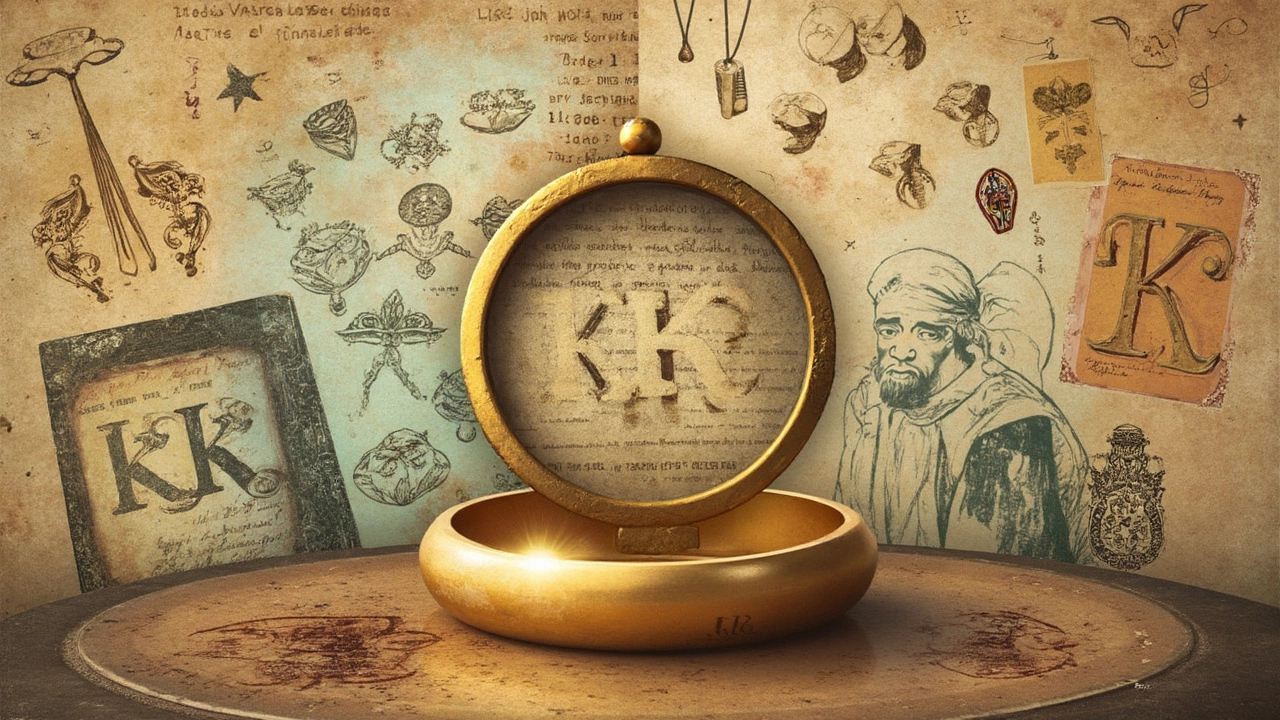
Tips for Collectors & Buyers
If you’re thinking about starting a collection or buying a piece stamped with "KK," it pays to know what you’re doing. There’s more to spotting great KK jewelry than just admiring its shine. Here are some practical tips to keep you out of trouble and maybe even help you score an incredible find.
- Always check for other hallmarks: Genuine KK pieces almost always include other marks, like the gold purity (e.g., 14K, 18K) or symbols showing where it was made. If "KK" is the only mark, be a bit skeptical.
- Research the seller: It sounds obvious, but mistakes happen. If you’re buying online or from an unfamiliar market, look for positive reviews or stick to dealers who are members of industry organizations.
- Ask for provenance: Vintage sellers often know where their jewelry came from or at least have a guess about its era. If someone can share how they got the piece, it usually adds a layer of trust.
- Get it tested: If the price feels too good to be true, take the piece to a local jeweler for testing. Even a $10 test can save you from buying something completely fake.
- Watch for fakes: Some newer jewelry makers use "KK" just because it looks convincing. Genuine antique "KK" marks have a certain style—check reference images or forums online for comparison photos.
Thousands of collectors use quick checks and research to avoid mistakes. According to a 2024 survey by Antique Jewelry Magazine, 68% of buyers found the maker’s stamp to be the most important factor in determining authenticity.
| What to Check | Why It Matters |
|---|---|
| Other Hallmarks | Confirms gold purity and origin |
| Documentation | Adds credibility/provenance |
| Style of "KK" Mark | Genuine marks are consistent for era |
| Seller Reputation | Reduces risk of fake purchases |
One last thing: join a collector’s group (there are plenty on Facebook and Reddit). Folks there love to trade photos and stories, and most will help identify a weird mark in five minutes flat. When in doubt, ask questions—it’s way better than regretting a rushed buy later.
